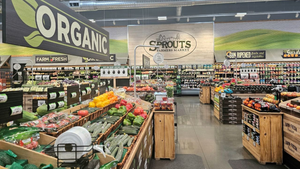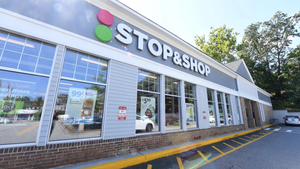Diverse supermarket shoppers give a positive grade to produceDiverse supermarket shoppers give a positive grade to produce
Multicultural Americans are making healthy eating a priority.
November 7, 2024

Fruits and vegetables are proving to be powerful magnets for retailers seeking to attract multicultural consumers.
With such ethnic groups as Hispanics and Asian Americans demonstrating a strong proclivity for healthier options, merchandisers that spotlight high-quality produce are in position to boost activity from the increasing lucrative sector, research reveals.
In a 2024 nationally representative survey by Collage Group, a Bethesda, Md.-based consumer research firm, 52% of both Hispanic and Asian consumers indicated that they are actively trying to increase their consumption of fruits and/or vegetables, versus 48% of white shoppers and 49% of all respondents.
In addition, 58% of Hispanics and 53% of Asians cite “healthy” as being among the most important factors when choosing breakfast items, versus just 39% of whites and 44% of all respondents.
Fifty-six percent of Hispanics and 54% of Asians also list healthy as being one of the most important elements when selecting lunch items, compared to 39% of white consumers and 43% of all respondents.
For dinner, 58% of Hispanics and 57% of Asians indicate that healthy is important when picking selections, compared to 43% of whites and 46% of all consumers.
Furthermore, 41% of both Hispanics and Asians list “healthier than other options” as a factor in trying a food item for the first time, compared to 32% of whites and 35% of all shoppers.
“Asian Americans use food to be more adventurous and there is nothing more adventurous in the grocery store than produce,” said Jack Mackinnon, Collage Group senior director of cultural insights. “Grocers should take a calculated risk to bring in new fruits and vegetables and experiment with new tastes while encouraging consumers to have fun and be brave.”
Produce retailers also should tailor their merchandising to the specific shopping behaviors of each group, Mackinnon said. Black shoppers and white consumers, for instance, are far more likely to shop seasonally than Hispanics, he said.
“Lean into seasonal changes and limited time offerings when engaging with Black consumers,” he said. “Then, learn from successes for next year.”
Hispanic shoppers, meanwhile, are more likely to purchase organic produce and to eat healthy even if a selection is not as tasty as other options.
About one-third of Hispanic and Black consumers further indicate that they would be comfortable buying fresh produce online versus about one-quarter of Asian and white Americans, Collage Group found.
“Don’t be shy about investing in online ordering services,” Mackinnon said. “The produce options won’t catch everyone, but they will help boost sales with these segments.”
About the Author
You May Also Like


.webp?width=300&auto=webp&quality=80&disable=upscale)



